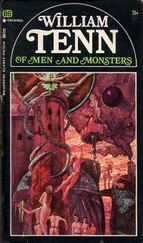Charles Gould - Mythical Monsters
Здесь есть возможность читать онлайн «Charles Gould - Mythical Monsters» — ознакомительный отрывок электронной книги совершенно бесплатно, а после прочтения отрывка купить полную версию. В некоторых случаях можно слушать аудио, скачать через торрент в формате fb2 и присутствует краткое содержание. Жанр: Мифы. Легенды. Эпос, Природа и животные, foreign_antique, foreign_prose, на английском языке. Описание произведения, (предисловие) а так же отзывы посетителей доступны на портале библиотеки ЛибКат.
- Название:Mythical Monsters
- Автор:
- Жанр:
- Год:неизвестен
- ISBN:нет данных
- Рейтинг книги:5 / 5. Голосов: 1
-
Избранное:Добавить в избранное
- Отзывы:
-
Ваша оценка:
- 100
- 1
- 2
- 3
- 4
- 5
Mythical Monsters: краткое содержание, описание и аннотация
Предлагаем к чтению аннотацию, описание, краткое содержание или предисловие (зависит от того, что написал сам автор книги «Mythical Monsters»). Если вы не нашли необходимую информацию о книге — напишите в комментариях, мы постараемся отыскать её.
Mythical Monsters — читать онлайн ознакомительный отрывок
Ниже представлен текст книги, разбитый по страницам. Система сохранения места последней прочитанной страницы, позволяет с удобством читать онлайн бесплатно книгу «Mythical Monsters», без необходимости каждый раз заново искать на чём Вы остановились. Поставьте закладку, и сможете в любой момент перейти на страницу, на которой закончили чтение.
Интервал:
Закладка:
Many similar fluctuations of climate have been traced right back through the geological record; but this fact, though interesting in relation to the general solution of the causes, has little bearing on the present purpose.
Sir Charles Lyell conceived that all cosmical changes of climate in the past might be accounted for by the varying preponderance of land in the vicinity of the equator or near the poles, supplemented, of course, in a subordinate degree by alteration of level and the influence of ocean currents. When, for example, at any geological period the excess of land was equatorial, the ascent and passage northwards of currents of heated air would, according to his view, render the poles habitable; while, per contrâ , the excessive massing of land around the pole, and absence of it from the equator, would cause an arctic climate to spread far over the now temperate latitudes.
The correctness of these inferences has been objected to by Mr. James Geikie and Dr. Croll, who doubt whether the northward currents of air would act as successful carriers of heat to the polar regions, or whether they would not rather dissipate it into space upon the road. On the other hand, Mr. Geikie, though admitting that the temperature of a large unbroken arctic continent would be low, suggests that, as the winds would be stripped of all moisture on its fringes, the interior would therefore be without accumulations of snow and ice; and in the more probable event of its being deeply indented by fjords and bays, warm sea-currents (the representatives of our present Gulf and Japan streams, but possessing a higher temperature than either, from the greater extent of equatorial sea-surface originating them, and exposed to the sun’s influence) would flow northward, and, ramifying, carry with them warm and heated atmospheres far into its interior, though even these, he thinks, would be insufficient in their effects under any circumstances to produce the sub-tropical climates which are known to have existed in high latitudes.
Mr. John Evans 75has thrown out the idea that possibly a complete translation of geographical position with respect to polar axes may have been produced by a sliding of the whole surface crust of the globe about a fluid nucleus. This, he considers, would be induced by disturbances of equilibrium of the whole mass from geological causes. He further points out that the difference between the polar and equatorial diameters of the globe, which constitutes an important objection to his theory, is materially reduced when we take into consideration the enormous depth of the ocean over a large portion of the equator, and the great tracts of land elevated considerably above the sea-level in higher latitudes. He also speculates on the general average of the surface having in bygone geological epochs approached much more nearly to that of a sphere than it does at the present time.
Sir John Lubbock favoured the idea of a change in the position of the axis of rotation, and this view has been supported by Sir H. James 76and many later geologists. 77If I apprehend their arguments correctly, this change could only have been produced by what may be termed geological revolutions. These are great outbursts of volcanic matter, elevations, subsidences, and the like. These having probably been almost continuous throughout geological time, incessant changes, small or great, would be demanded in the position of the axis, and the world must be considered as a globe rolling over in space with every alteration of its centre of gravity. The possibility of this view must be left for mathematicians and astronomers to determine.
Sounder arguments sustain the theory propounded by Dr. Croll (though this, again, is not universally accepted), that all these alterations of climate can be accounted for by the effects of nutation, and the precession of the equinoxes. From these changes, combined with the eccentricity of the ecliptic from the first, it results that at intervals of ten thousand five hundred years, the northern and southern hemispheres are alternately in aphelion during the winter, and in perihelion during the summer months, and vice versâ ; or, in other words, that if at any given period the inclination of the earth’s axis produces winter in the northern hemisphere, while the earth is at a maximum distance from that focus of its orbit in which the sun is situated, then, after an interval of ten thousand five hundred years, and as a result of the sum of the backward motion of the equinoxes along the ecliptic, at the rate of 50′ annually, the converse will obtain, and it will be winter in the northern hemisphere while the earth is at a minimum distance from the sun.
The amount of eccentricity of the ecliptic varies greatly during long periods, and has been calculated for several million years back. Mr. Croll 78has demonstrated a theory explaining all great secular variations of climate as indirectly the result of this, through the action of sundry physical agencies, such as the accumulation of snow and ice, and especially the deflection of ocean currents. From a consideration of the tables which he has computed of the eccentricity and longitude of the earth’s orbit, he refers the glacial epoch to a period commencing about two hundred and forty thousand years back, and extending down to about eighty thousand years ago, and he describes it as “consisting of a long succession of cold and warm periods; the warm periods of the one hemisphere corresponding in time with the cold periods of the other, and vice versâ .”
Having thus spoken of the processes adopted for estimating the duration of geological ages, and the results which have been arrived at, with great probability of accuracy, in regard to some of the more recent, it now only remains to briefly state the facts from which the existence of man, during these latter periods, has been demonstrated. The literature of this subject already extends to volumes, and it is therefore obviously impossible, in the course of the few pages which the limits of this work admit, to give anything but the shortest abstract, or to assign the credit relatively due to the numerous progressive workers in this rich field of research. I therefore content myself with taking as my text-book Mr. James Geikie’s Prehistoric Europe , the latest and most exhaustive work upon the subject, and summarizing from it the statements essential to my purpose.
From it we learn that, long prior to the ages when men were acquainted with the uses of bronze and iron, there existed nations or tribes, ignorant of the means by which these metals are utilized, whose weapons and implements were formed of stone, horn, bone, and wood.
These, again, may be divided into an earlier and a later race, strongly characterized by the marked differences in the nature of the stone implements which they respectively manufactured, both in respect to the material employed and the amount of finish bestowed upon it. To the two periods in which these people lived the terms Palæolithic and Neolithic have been respectively applied, and a vast era is supposed to have intervened between the retiring from Europe of the one and the appearance there of the other.
Palæolithic man was contemporaneous with the mammoth ( Elephas primigenius ), the woolly rhinoceros ( Rhinoceros primigenius ), the Hippopotamus major , and a variety of other species, now quite extinct, as well as with many which, though still existing in other regions, are no longer found in Europe; whereas the animals contemporaneous with Neolithic man were essentially the same as those still occupying it.
Fig. 19. – Engraving by Palæolithic Man on Reindeer Antler. 79
(The two sides of the same piece of antler are here represented.)
The stone implements of Palæolithic man had but little variety of form, were very rudely fashioned, being merely chipped into shape, and never ground or polished; they were worked nearly entirely out of flint and chert. Those of Neolithic man were made of many varieties of hard stone, often beautifully finished, frequently ground to a sharp point or edge, and polished all over.
Читать дальшеИнтервал:
Закладка:
Похожие книги на «Mythical Monsters»
Представляем Вашему вниманию похожие книги на «Mythical Monsters» списком для выбора. Мы отобрали схожую по названию и смыслу литературу в надежде предоставить читателям больше вариантов отыскать новые, интересные, ещё непрочитанные произведения.
Обсуждение, отзывы о книге «Mythical Monsters» и просто собственные мнения читателей. Оставьте ваши комментарии, напишите, что Вы думаете о произведении, его смысле или главных героях. Укажите что конкретно понравилось, а что нет, и почему Вы так считаете.











